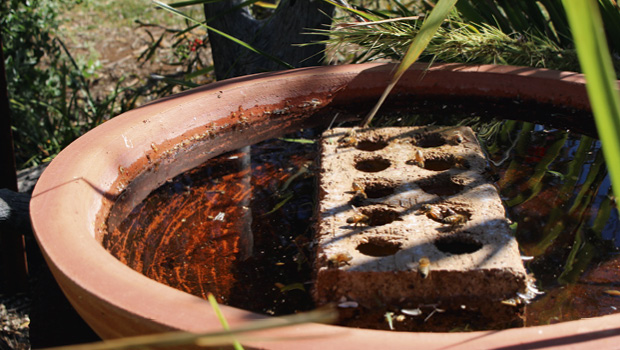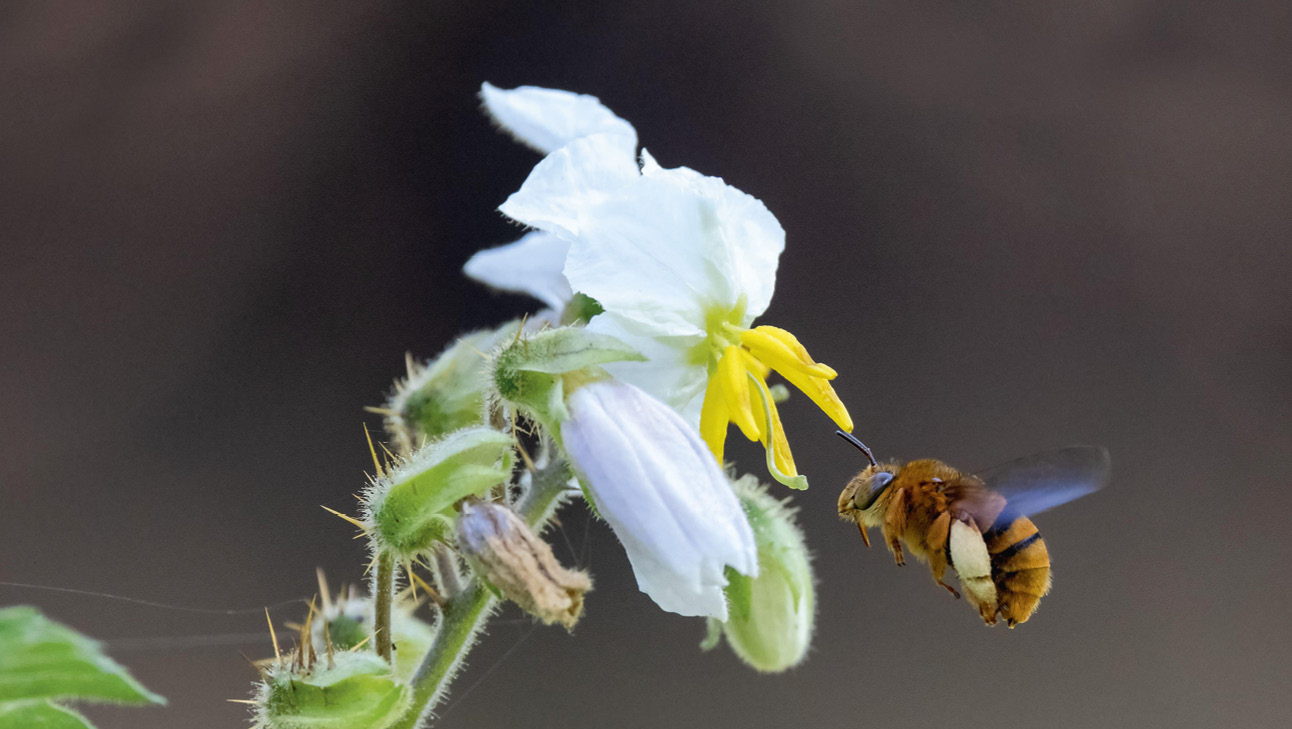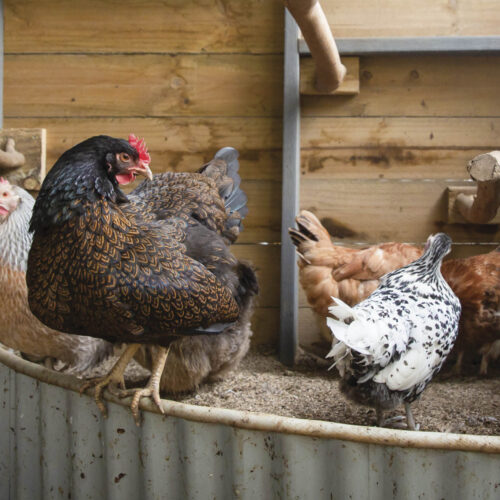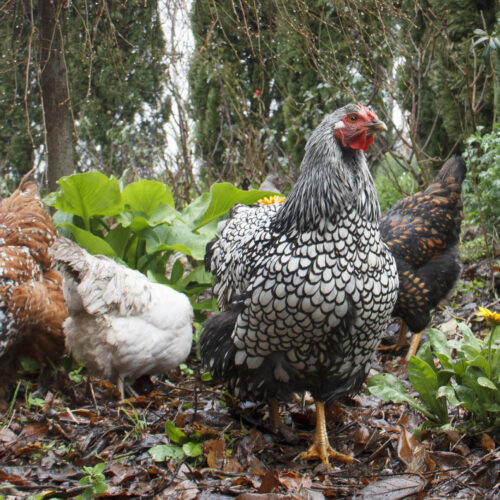Bring in the bees
2021-12-15T00:16:36+11:00
There's heaps to do in the summer garden, including encouraging bees to visit and stay. Our horticultural experts have some tips to help you take care of these precious pollinators.
Introduced honeybees are essential to much of our food production, so it’s wonderful to have your own beehive. But we have more than 2000 species of native bees in Australia, too. We don’t know how many because some have yet to be identified. It saddens me that with development, habitat destruction and climate change we are losing species, both known and unknown. As gardeners we can help reverse this by growing indigenous plants, making sure some are in flower all-year-round and leaving wild spaces with lots of cracks, nooks and crannies. Also leave some patches of soil uncovered, grow trees with varying barks and bushes with different leaf shapes. All of these provide food and habitat for native bees.
- Blue-banded bees (Amegilla cingulata) are solitary, ground-nesting bees, as well as being important pollinators in the garden. They are native to the warmer parts of Australia, but with climate change have made their way into my garden in Victoria. These honeybees are buzz pollinators with their wing muscles transferring vibrations to their heads so they effectively headbutt the flowers. They are particularly effective at pollinating vegetables in the solanaceae family (tomatoes, potatoes, capsicums), which are mostly wind-pollinated. This may result in cross-pollination, so if you are growing different cultivars, you may get some unusual fruit.
-
Native solitary bees need access to pollen and nectar for food, but they also need nesting sites. Some, such as teddy bear bees (Amegilla bombiformis) burrow into the ground to nest. So, in a sheltered corner of your garden leave some soil uncovered or create a dirt bank.
-
Many Australian native bees rely on old or dead trees for habitat and nesting sites, so don’t be too quick to remove them. You can also hang a bunch of sticks or a bundle of (hollow) stems in a tree to increase the diversity of habitat options.
– Penny Woodward

- Place a brick in water features as a bee drinking and rest station, making sure the top of the brick is above the water line. The bees especially love bricks with holes so they can climb in and out of the holes to have a drink, then dry off and rest. The rougher surface makes it easier for bees to cling on.
- If extremely hot, create a shade structure above bee-attracting flowers where the bees can get some heat relief. It will be a temporary canopy so be creative in what you use. For example, a beach umbrella or shade tent. Make sure the beehive is shaded too. Providing honeybees a water station is essential and a shelter above will decrease bee heat stress.
– Leonie Shanahan
The 2021/22 Summer Issue (Issue 130) is filled with ideas to get more bees into your garden — and to tempt them to stay. Head here to get a copy or subscribe for a year’s supply of naturally great ideas!






